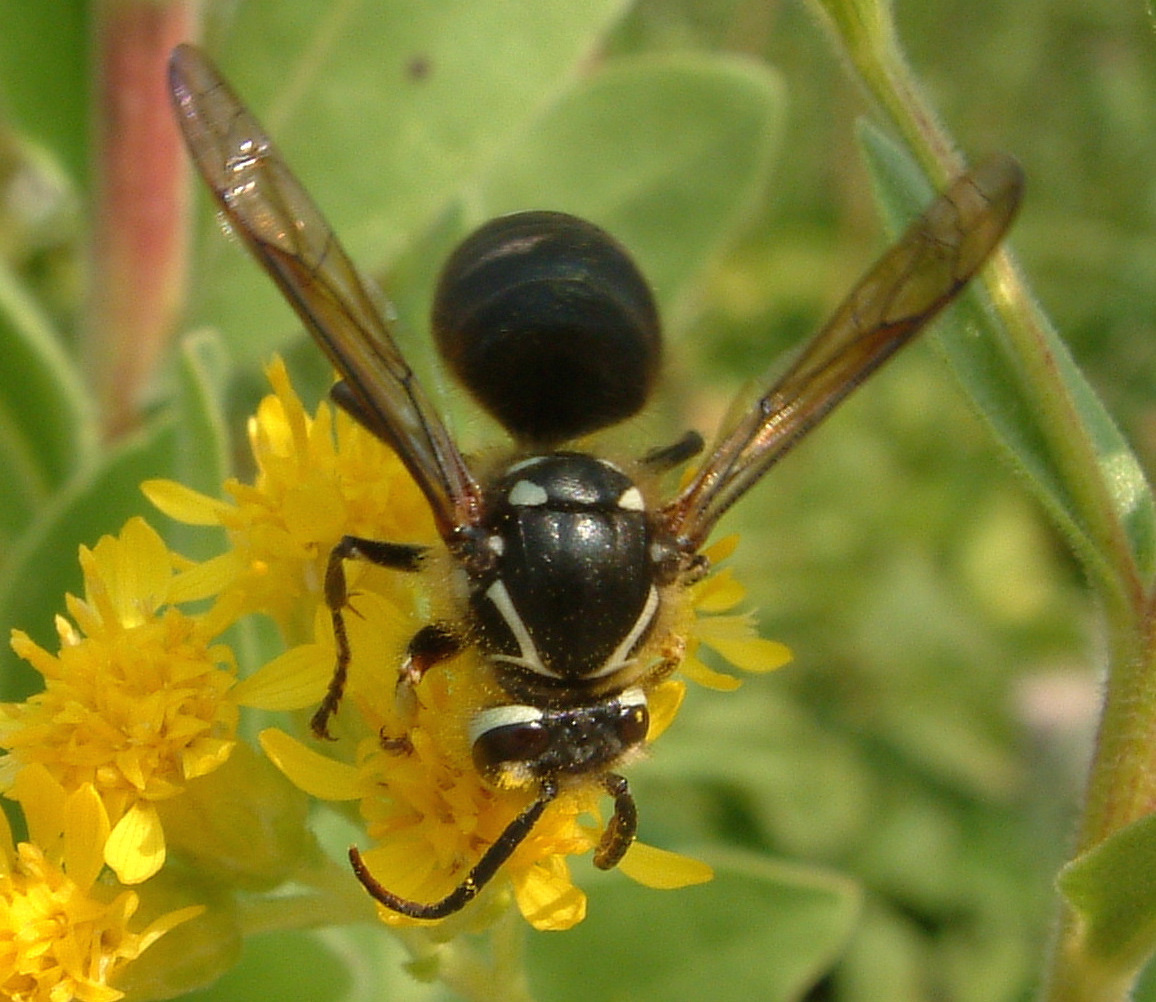
Wasps are mainly predatory carnivores. They hunt small insects for their own food, and to feed their young. You will see wasps visit flowers, however, for two reasons. They drink flower nectar for quick energy while they hunt, and they use flowers as a hunting ground for smaller insects that are also attracted there. In fact, several kinds of wasps are beneficial in gardens, since they are predators of insects that damage plants.
Queens stop laying eggs and nesting in general, in late summer and autumn. For this reason, the wasp's dietary needs change from a focus on protein sources (other insects which they usually eat) to a greater interest in collecting sweets and other carbohydrates. Some wasps may become aggressive scavengers around human food -- this is why they are common at picnics or around windfallen apples in orchards.
What are the benefits of wasps?
Wasps, especially European paper wasps, eat some of the insects in your garden that you might consider pests, such as hornworms, cabbageworms, tent caterpillars and aphids. Sawfly larvae are also tasty snacks for wasps.
Let's toast those European hornets and paper wasps for another reason! They tend to bite grapes while they're still on the vine and kickstart fermentation. Wasps often carry the yeast Saccharomyces cerevisiae in their guts, and this is the common brewer's yeast responsible for wine, beer and bread fermentation. When the wasp bites the fruit, some of the yeast remains in the fruit. And, wasps inadvertently perform some pollinating services as well.
Why do wasps sting?
Wasps (and bees) only sting as a defense mechanism. If they feel threatened, they will sting. Yellowjackets adamantly guard their nest entrances, so vibrations and rapid movement, such as that caused by a lawn mower, can easily induce a sting. Some species release an alarm chemical upon stinging, which causes other wasps to join the attack. Thus, being aware of the location of a wasp nest is beneficial! Social wasps (those that live in colonies) do not die after stinging, as honeybees do, and thus, they can sting repeatedly.
How to avoid stings?
In recreation areas, be aware of wasps around waste bins, and check your food or drink before consumption. When in wasp-infested areas, avoid wearing sweet-smelling colognes, perfumes, or hair sprays. Wasps are attracted to bright orange, yellow, and blue clothing. Khaki, tan, and dark colors are less attractive to wasps. If a wasp does approach you, it is best to remain still or move away slowly, because rapid movements, such as swatting, may stimulate stinging.
The most common wasps that you will see in Canada are yellow jackets, bald faced hornets and paper wasps. These are all social insects that live in colonies. The colonies mostly die over winter; only mated females survive, starting a new brood of female worker wasps each spring. Because the colonies increase in size during the summer, you will probably notice more of the social wasps in late summer and fall. If you see many wasps of the same kind in your observations, especially late in the season, they are probably one of the social wasps. If you see only one or two of a particular kind in late summer, it is likely a solitary wasp.
There are many species of solitary wasps, such as the Vespid wasps. They shelter in small holes in logs or in the ground, and live an independent lifestyle. Like all wasps, they are mainly predators of small insects, but some species collect pollen to feed their young.
Wasps can be identified by their slender, needle-thin waists, oval eyes and long antennae. They also generally have smooth bodies, unlike the hairy bodies of bees and flies. Most wasps sting, but only the females, since the stinger is a modified ovipositor (egg laying structure) in infertile worker females.
Photo: A Vespid wasp pollinates a goldenrod flower.
Wasp Profiles
Pollinator Profile: Bald-Faced Hornets COMING SOON
Pollinator Profile: Paper Wasps COMING SOON
Pollinator Profile: Yellow Jacket Wasps COMING SOON
